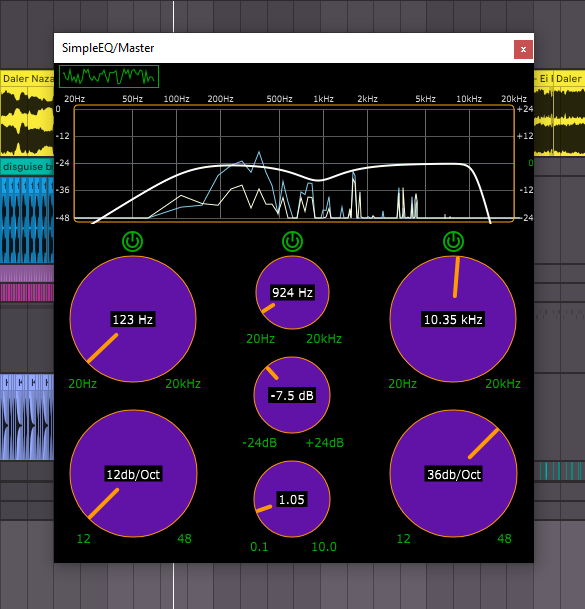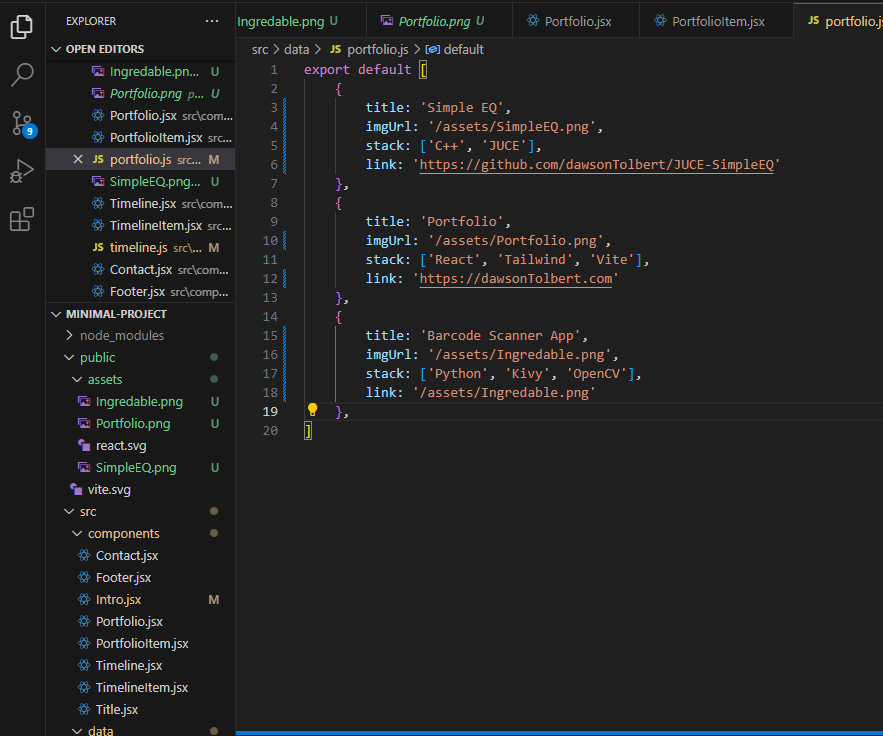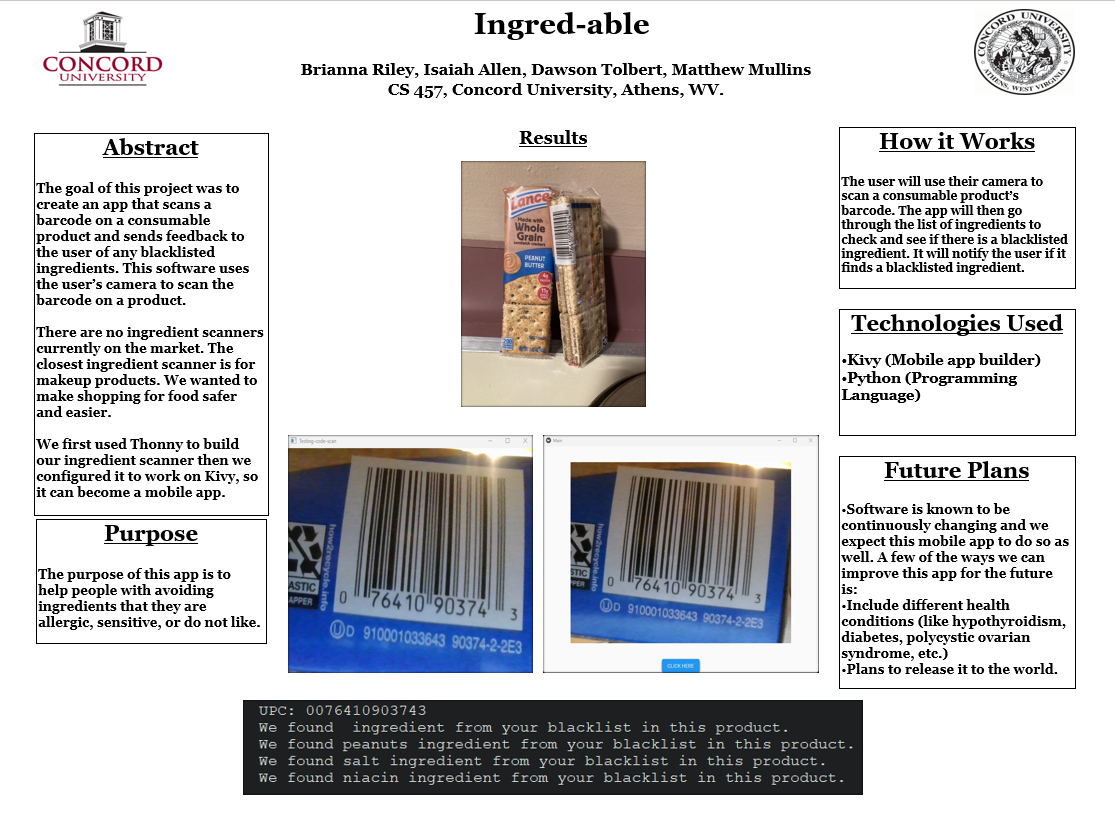Dawson Tolbert
🛠️ Software Engineer ⚙️
I am an indie developer interested in expanding my engineering knowledge and finding challenging experiences. | Proficient in Python, C/C++, HTML/CSS | Seeking New Opportunities
Project Timeline
QoL Buttons
Added toggles for individual low/highcut filter and peak bypasses. Added toggle for analyzer window.
Improved GUI
Connected response curve in the filtergraph window to params so that it gives visual feedback on how parameter changes will affect the EQ sound. Added grid lines and gain/freq labels to filtergraph window. Added circle knobs with path drawing in place of sliders for param changing and gave them custom colors and labels to accurately describe param changes (ex: Hz/kHz for freq changes, dB for gain changes). Implemented FFT Spectrum analyzer in filtergraph window with separate Left/Right channel paths.
Built Initial Functionality
Added effect parameters, filter channels, filtergraph, and basic GUI sliders.
Initial Commit
Empty JUCE Plugin layout.
Project Timeline
Project Card Improvements
Previously each project card was static and simply linked to some example of the project when clicked. I wanted to improve the functionality of these cards to be able to convey more information about each project and my specific contributions. I made the project cards expandable, each with added descriptions and scrollable project timelines giving outlines of notable project contributions or changes.
Visual Improvements
Added slight visual improvements, such as: Button click, object hover, a text-field feed-backs making use of simple border color changes, shadows, and element translations; Color pallette changes for a more appealing style; And added a section for my personal links above my project cards.
Initial Commit
Built a basic single-page portfolio site complete with a bio, project cards with links, a timeline, a contact form, and toggleable dark mode.
Project Timeline
Kivy Integration
During this phase, we built upon our prototype by refactoring our code, improving its error handling and optimizing the code, fixing bugs, and, most importantly, implementing the Kivy framework to deploy the application on Android devices. I was mainly involved with the implementation of Kivy, dealing with creating in-app functionality and handling the front-end.
Proof of Concept Development
During this phase, we worked on getting the most minimal application running. Our aim was to build a Python script that would allow a user to add ingredients to a blacklist file, catch barcode information through a live camera feed, send an API request with the barcode's UPC code to the database for ingredient information, and then compare the received info against the blacklist file to find any blacklisted ingredients.
Initial Research Phase
Researching different mobile-development frameworks, libraries for image processing for barcode scanning, and barcode databases for our project. Eventually, we settled on using the Kivy framework to develop the app, and chose to use OpenCV for image processing and UPCItemDB as a stand-in database. This work was done in large part individually, with consistent feedback and updates being given between myself and the team.
Initial Planning Phase
Sorting out potential and assured functionality. Coming up with flowcharts. Drawing up example User Interfaces. Figuring out the "big picture" before research and development begins. All of this work was done as a collective team.
Timeline
Today
Seeking Employment Opportunities
Actively seeking Computer Science positions to leverage my skills and pursue a rewarding career in this dynamic field.
2024
Began Studying Audio Programming and Learning JUCE
Learning about Digital Signal Processing, plugin development, synthesizers, and other audio programming ideas & concepts.
2023
Obtained Bachelor's Degree in Computer Science
3 YearsConcord University. GPA: 3.63. Cum Laude.
2020
First Line of Code
print("Hello World")
© 2025 Dawson Tolbert. All rights reserved.


